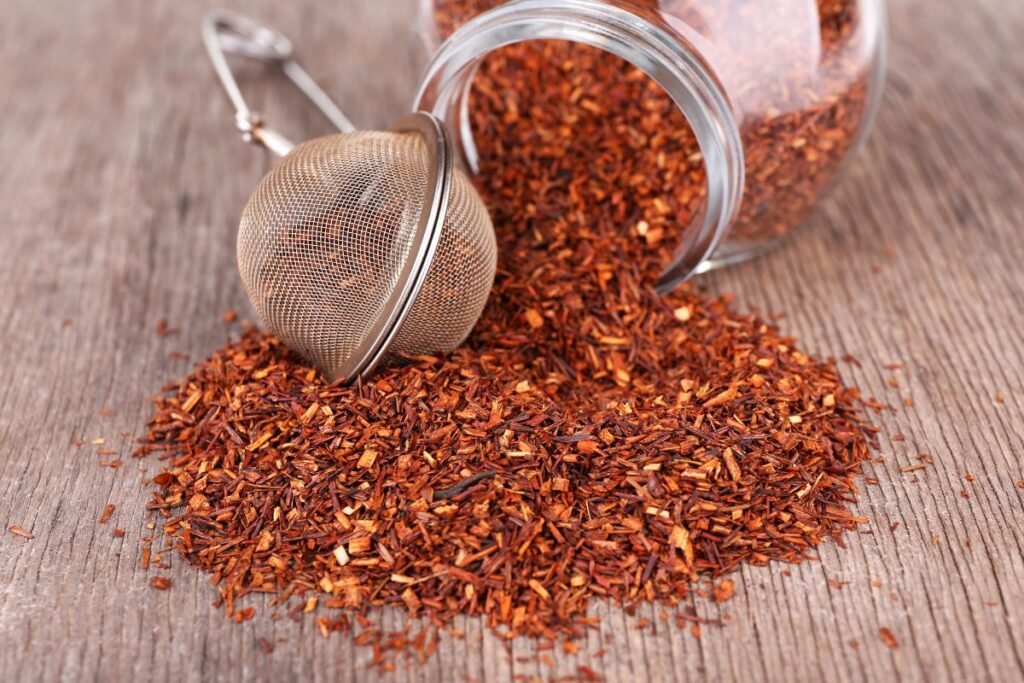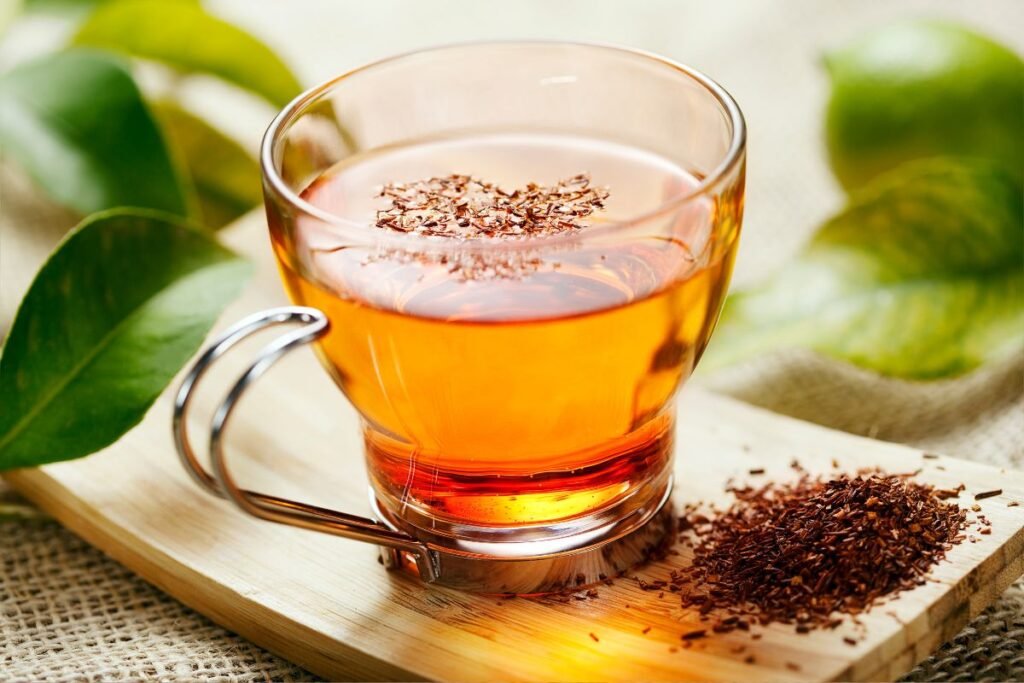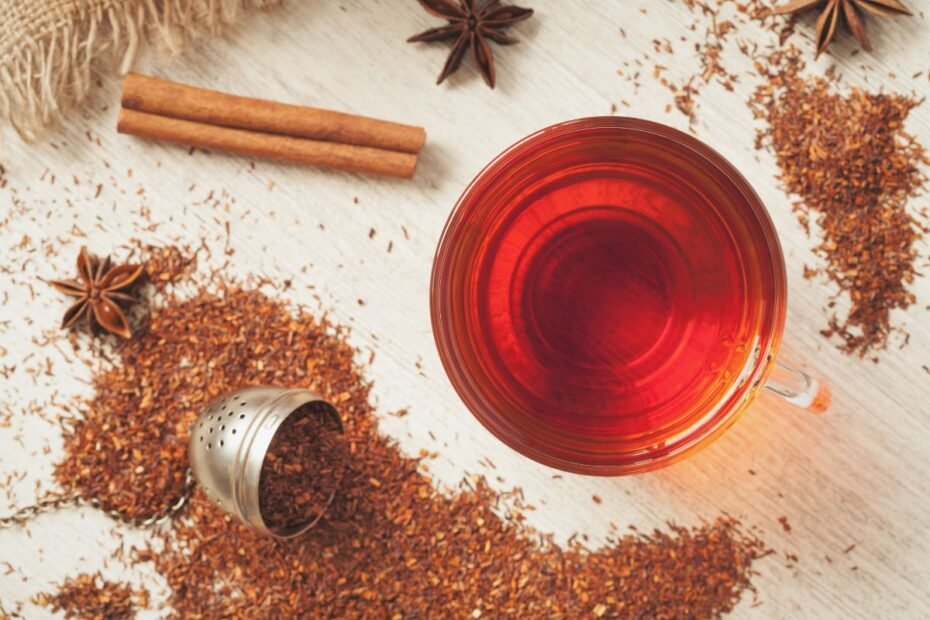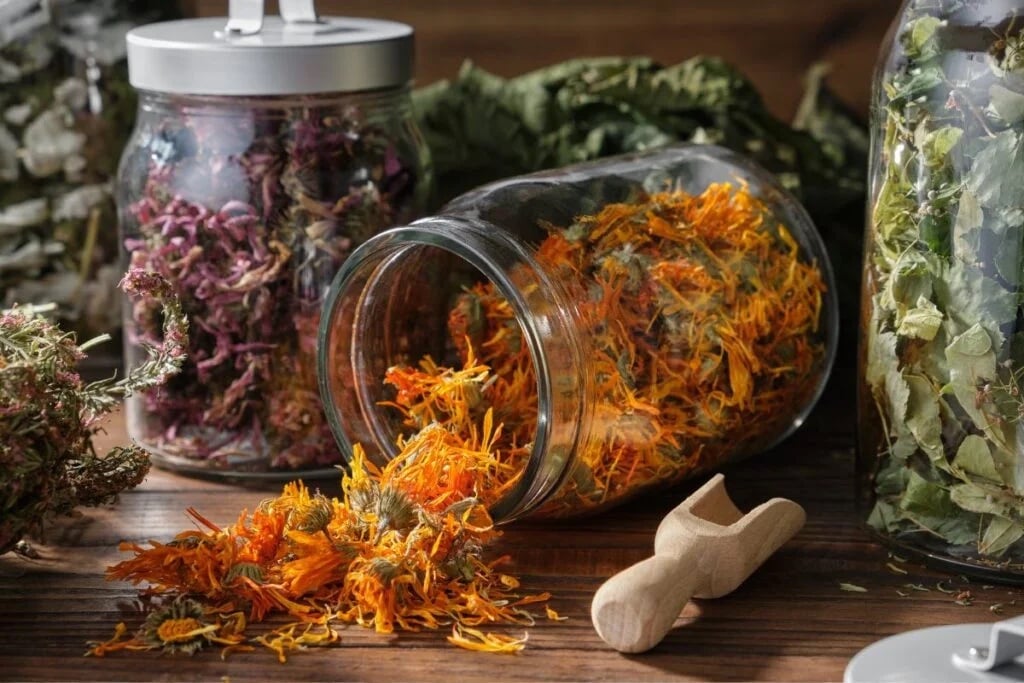Red tea, known as rooibos, is… not tea at all. Well, at least technically. It is a drink made from the fermented leaves of the so-called bush tea, or redbush tea shrub (Aspalathus linearis), a member of the Fabaceae plant family. Red tea originates in the Republic of South Africa and nowhere else. Here, it is growing only in one particular region of the southwest of the country, the Sederberg Highlands. Have you tasted this distinctly African flavor yet? We’ve put together a few facts that will encourage you to brew a full cup of rooibos tea benefits.
Red Tea Is Caffeine-Free
Whether you are avoiding caffeine altogether or just looking for an alternative for the evening, red tea is a 100% safe choice. Some teas, such as white tea, are deceptively mild but can have a tonic effect on sensitive bodies. In the case of Rooibos tea, you can rest assured. Moreover, Rooibos tea refreshes your taste palette.
Rooibos Tea Is Naturally Sweet
Rooibos contains unique oligosaccharides. These compounds give the tea a subtle sweetness, so even little toddlers will be happy to drink it without extra sugar. Red tea has a refreshing flavor with honey notes, a robust body, and a sweet and rich aroma. Its deep amber color is reminiscent of some black teas and can be an excellent substitute for the latter. However, don’t be surprised to see green rooibos. This is the same plant but it has not undergone a fermentation process. It may result in slightly different flavors.

Red Tea: (Almost) Tannin-Free
Do you know that palate-tightening sensation you get when you drink a remarkably robust tea? The mouth gets dry because of the high tannin content, so you want to rinse it with plenty of water. Red tea has very few tannins. It is mild and won’t become bitter, even if you accidentally forget it in the teapot for longer. It means it is an excellent thirst-quencher and does not require additional fluids to rebalance.
Other Rooibos Tea Benefits
Vitamins C, E, and beta-carotene are some of the most vital and deficient antioxidants. Red tea has plenty of these compounds. And our bodies absorb antioxidants well. Red tea is also rich in trace elements, from magnesium, zinc, and potassium to iron. Thus, you can drink rooibos as a natural isotonic drink to restore electrolyte balance after intense activity and in cases of indigestion.

How to Prepare Red Tea
The benefits of rooibos tea lie in its versatility. You can drink it hot or cold, with water or milk; it is even made into an espresso! It sounds unusual, but one tea producer offers a specially ground raw material called ‘red espresso.’ Like coffee, it can be successfully brewed in an espresso machine and used to make lattes and other beverages typical of the “coffee” menu.
Red tea is completely temperature-neutral; unlike green or white tea, you can pour boiled water over rooibos leaves. You will not risk losing any of the flavor. Rooibos can be spilled a second time, but the intensity of flavor and aroma will be reduced. When summer comes, try the trendy red tea brew—pour tea leaves over with cold water and leave it in the fridge overnight. Dilute the resulting concentrate with ice cream, garnish with citrus or other fruits you like, and enjoy a burst of beneficial freshness!
Sources:
- https://www.healthline.com/nutrition/rooibos-tea-benefits
- https://www.webmd.com/diet/health-benefits-rooibos
Associative photos from © Canva.

